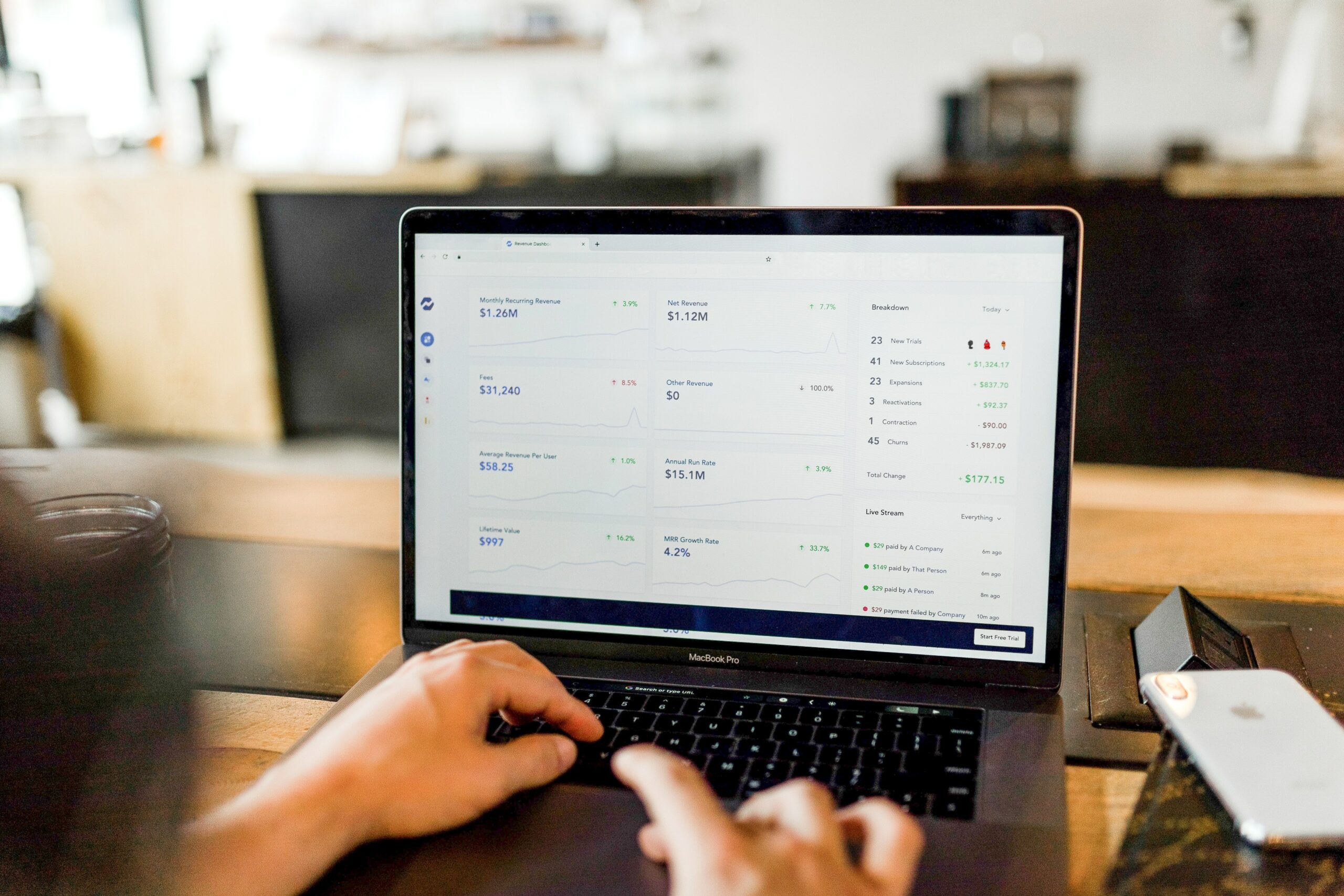To succeed in one-page website SEO, it’s crucial to focus on comprehensive keyword planning, strategic content structuring, and a seamless user experience. Effectively utilizing these tactics can set a single-page site apart in the digital landscape.
Optimizing a one-page website begins with understanding the interplay between content density and user engagement. With limited real estate, every section of the page must be meticulously planned to contribute to the site’s overall SEO goals.
Whether you’re launching a portfolio, product showcase, or a streamlined business site, this article provides actionable insights to enhance your website’s search engine rankings and overall online success.
Single Page Website
One-page websites offer a streamlined and intuitive user experience. All necessary information is presented on a single, long-scrolling page.
This design approach is visually appealing and simplifies the navigation process for users, as they can access content without the need to click through multiple pages.
The on-page SEO for such websites is concentrated on a singular canvas, where every element plays a part in attracting and retaining visitor attention. The effectiveness of one-page website SEO hinges on the ability to craft a cohesive narrative that guides the visitor through the content.
Careful planning and deliberate design choices allow these websites to make a strong impact, harnessing the power of storytelling and visual engagement to captivate audiences. However, their SEO success also relies on overcoming specific challenges unique to the one-page format.
One-Page Online Presence
One-page websites embody a concise digital marketing strategy. They unfold the entire brand story and user journey on a single page, leveraging a clean, focused layout to deliver a message without the distraction of navigating through multiple pages.
Content marketing efforts are concentrated, aiming to engage users with a potent mix of visual and textual elements that encourage them to scroll and explore.
Single-Page Website vs. Traditional Multi-Page Sites
The debate between one-page websites and traditional multi-page sites centers around the goals of digital marketing and user experience. Single-page sites excel in delivering focused content in a storytelling format, where users scroll through a cohesive narrative.
This can be particularly effective for specific campaigns or when a business wishes to highlight a single product or service. On the other hand, multi-page websites offer the flexibility to target a broader range of keywords across various pages.
Anchor links play a pivotal role in one-page site navigation, directing users seamlessly to different content sections within the same page, while traditional sites rely on interlinking separate pages.
Page speed is critical for both; however, one-page sites may have an advantage as all the page content loads simultaneously, potentially reducing load times across the user journey.
Content marketing strategies also differ, with single-page sites needing to be more creative in integrating diverse keywords and topics into a unified page content structure.

The SEO Paradox of Single-Page Websites
One-page websites present an interesting SEO paradox, as their singular nature defies traditional on-page SEO methodologies designed for multi-page architectures. The challenge lies in effectively communicating a broad spectrum of information and keywords within a confined space.
This constraint demands innovation and precision in implementing on-page SEO tactics tailored to the one-page format. The paradox extends to the perception of one-page websites within the SEO community.
While some argue that their concentrated nature limits their ranking potential, others see it as an opportunity to optimize a single, powerful page that can punch above its weight in search results. The key is to harness the unique attributes of one-page websites to carve out a competitive niche in the SEO landscape.
Can One-Page Websites Truly Rank?
The myth that one-page websites cannot rank effectively in search engines is a misconception that fails to consider the potential of well-executed single-page design. When optimized correctly, these websites can achieve high rankings for targeted keywords.
Their visually appealing layouts can increase user engagement, a positive signal to search engines. Furthermore, the consolidated nature of one-page websites means that all the SEO efforts are focused on a single URL, potentially strengthening its authority and relevance for specific search queries.
The challenge lies not in the format itself but in the strategic application of SEO principles within the constraints of a one-page layout.
The Unique SEO Challenges Faced by Single-Page Sites
Single-page sites encounter distinct SEO challenges due to their condensed structure. One such challenge is optimizing page speed, which is vital for retaining user engagement and reducing bounce rates.
Every element must be optimized, from images to scripts, to ensure swift page loading. Additionally, the page content must balance being comprehensive and concise to hold the user’s attention as they scroll.
Anchor links enhance the user experience on one-page websites by enabling quick navigation to different content sections. In digital marketing, these sites must employ innovative content marketing techniques to convey a brand’s message effectively within a single-page framework.
This includes the strategic placement of keywords and the creation of engaging content that compels users to scroll and interact with the site.
Difficulty in Keyword Targeting Due to Limited Content
One-page websites often serve as landing pages that aim to convert visitors with a focused message. However, the limited content space poses a challenge for keyword targeting, as there is less opportunity to naturally incorporate a wide range of keywords.
This limitation requires a more strategic approach to SEO, selecting a core set of keywords that align with the site’s primary objective and messaging. Moreover, with only one page available, each section must be carefully optimized to contribute to the site’s keyword relevance.
Crafting compelling and keyword-rich headings, meta descriptions, and content snippets becomes imperative to signal the page’s focus to search engines and to entice users to engage with the call to action.
The Conundrum of Backlink Acquisition
Acquiring backlinks for one-page websites poses a unique challenge, as there is only one target URL to promote. The traditional approach of creating multiple content pieces across various pages to attract links is not an option.
Instead, the focus must be on producing high-quality, shareable content within a single page compelling enough to earn backlinks from reputable sources.
Fostering relationships with influencers and leveraging social media can also aid backlink acquisition, as these platforms can drive traffic and attention to the one-page website.
Furthermore, participating in industry discussions and providing valuable insights can encourage others to link to the site as a resource, enhancing its backlink profile and SEO potential.
Boosting Single-Page Website Visibility
A holistic approach to SEO is required to elevate the visibility of one-page websites. This involves optimizing on-page elements and engaging in robust off-page SEO tactics, such as building a strong backlink profile and maximizing social media presence.
The singular nature of these websites demands that every aspect, from design to content, works in concert to captivate audiences and signal relevance to search engines.
Keyword Planning and Content Structuring
The success of one-page websites hinges on the artful combination of keyword planning and content structuring. Selecting a focused set of keywords encapsulating the site’s core offerings is crucial.
These keywords then inform the creation of strategic landing pages, where content is organized in a way that appeals to users and aligns with search engine algorithms.
Setting up Effective Anchor Links
Anchor links are the backbone of navigation on one-page websites, seamlessly guiding users through different content sections. Effective use of anchor links improves the user experience by allowing quick access to relevant information, which can lead to higher engagement and lower bounce rates.
Optimizing Single-Page Websites for Peak Performance
Peak performance is achieved for one-page websites through meticulous optimization of every on-page element. This includes ensuring the site is lightweight, responsive, and efficiently delivers content to users.
A well-optimized one-page website satisfies search engines and provides a superior user experience, which is a key factor in SEO success.
Prioritizing Page Speed to Enhance User Experience
Page speed is a critical factor for user experience on one-page websites. Long loading times can deter users, while fast-loading pages keep them engaged.
Tools like PageSpeed Insights provide valuable insights into improving page loading speeds and adhering to Core Web Vitals to ensure the site meets the latest performance standards.
Google’s John Mueller has also emphasized the importance of dynamically loaded content to maintain speed without sacrificing user experience.
Tips to Optimize Page Speed for the Competitive Edge
Optimizing page speed for one-page websites requires a combination of technical and strategic approaches. Compressing images, leveraging browser caching, and minimizing the use of heavy scripts can significantly reduce load times.
Additionally, implementing a content delivery network (CDN) can improve page speed by serving content from servers closer to the user’s location. Regularly monitoring and updating the website to address performance issues is essential for maintaining a competitive edge in page loading speeds.
The Role of a Clear Hierarchy in Usability
A straightforward hierarchy is crucial in a single-page website, as it aids usability and keyword rankings. By segmenting the page into clearly defined sections, users can easily navigate, and search engines can better understand the content, potentially improving the site’s visibility for various keywords.
Information organizations should intuitively lead visitors through the content, ensuring a seamless user experience.
Mobile Friendliness for On-The-Go Users
For mobile users, the convenience of a well-optimized single-page site cannot be overstated. Mobile optimization is essential as more people access the web on their devices.
A responsive design ensures that the mobile version of the site provides an optimal user experience, which is one of the key ranking signals used by search engines.
By leveraging website builders tailored for creating a single-page website, businesses can ensure their site is mobile-friendly and appealing to users everywhere.
The Significance of Image Optimization in SEO
Optimizing images is a vital step in advancing a single-page website’s SEO. Reducing file sizes without compromising quality improves load times, which is a significant factor in user engagement and SEO performance.
Search engines can index well-optimized images, further enhancing the site’s visibility and complementing the overall content marketing strategy.

Off-Page SEO Tactics for One-Page Sites
Off-page SEO is essential for single-page websites to gain visibility and credibility. Content marketing is pivotal in this endeavor, as it helps attract backlinks, drive traffic, and establish the site’s authority.
A single-page website can leverage its unique position and enhance its off-page SEO strategy by creating valuable content that resonates with the audience.
Cultivating a Robust Backlink Profile
Building a strong backlink profile is one of the pillars of SEO, and it can significantly impact a single-page website’s authority and search rankings.
A diverse and high-quality backlink portfolio signals to search engines that the site is a reputable source of information, which can improve organic search visibility and increase traffic.
Strategies to Double Down on Link Building for One-Pagers
Link building requires a targeted approach for single-page websites. Strategies include creating shareable content, engaging with influencers, and participating in online communities relevant to the site’s niche.
Single-page sites can enhance their link profile and SEO standing by focusing on quality over quantity and ensuring that each backlink is contextually relevant.
PageRank Concentration: Leveraging Single Page Authority
One-page websites focus their PageRank, creating a concentrated source of authority, unlike multi-page websites, which spread value across several pages, a single-page site pools all its resources into one place.
This means every link acquired directly boosts the main URL. To build backlinks effectively, creating high-quality content that stands out encourages others to link to the page and increases its PageRank.
Monitoring Performance With Analytics
Measuring a website’s performance is crucial for understanding its SEO success. Analytics tools offer invaluable insights into traffic, user behavior, and conversion metrics.
Regularly reviewing these analytics helps identify areas that need improvement and enables webmasters to make data-driven decisions to enhance their SEO strategy.
Tracking and Analyzing With Modern Tools Like GA4
Modern analytics tools like GA4 offer advanced tracking capabilities. Integrating Google Tag Manager with GA4 allows for efficient and precise data collection.
This setup enables webmasters to monitor specific user interactions and gain deeper insights, helping them tailor the one-page website to better meet its audience’s needs.
Bringing Your Single Page Website to the SEO Forefront
Focusing on delivering a seamless user experience with content that resonates with the audience is essential for one-page websites to excel in search engine rankings. Strategic use of SEO techniques is key to ensuring that these websites attract and retain user attention and rank well in search results.
Regular Updates and Content Diversification
Even within a single-page setup, content needs to be fresh and relevant. Regular updates signal to search engines that the site is active, potentially boosting engine rankings. While staying on topic, content diversification can attract a wider audience and encourage repeat visits, positively impacting SEO.
Employing Multiple Headings for Content Segmentation
Using multiple headings helps segment content on a one-page website, making it easier for users to navigate and for search engines to understand the structure. This approach aids website optimization and can improve the overall user experience, a significant factor in ranking potential.
Domain Age and Its Influence on SEO
While not the sole factor, domain age plays a role in SEO. Search engines often view older domains as more trustworthy and may have a slight edge in ranking potential.
However, new domains can achieve strong SEO performance with solid website optimization practices.
Weighing the Pros and Cons for Your Brand Strategy
Choosing between a one-page or a website with multiple pages depends on the brand’s goals. Single-page sites offer simplicity and ease of maintenance, while multi-page sites allow for more in-depth content and a broader range of keywords.
Each has its merits, and the decision should align with the brand’s strategy for reaching its target audience.

Wrap-Up
With the right strategies, single-page websites can pack a powerful SEO punch. Content marketing plays a pivotal role here; by focusing on quality over quantity, a single page can engage visitors with compelling narratives and visuals.
Effective keyword research is essential, allowing the site to target multiple keywords within the limited content available.
This approach helps reduce bounce rates, as visitors find relevant information without needing to navigate multiple pages.


